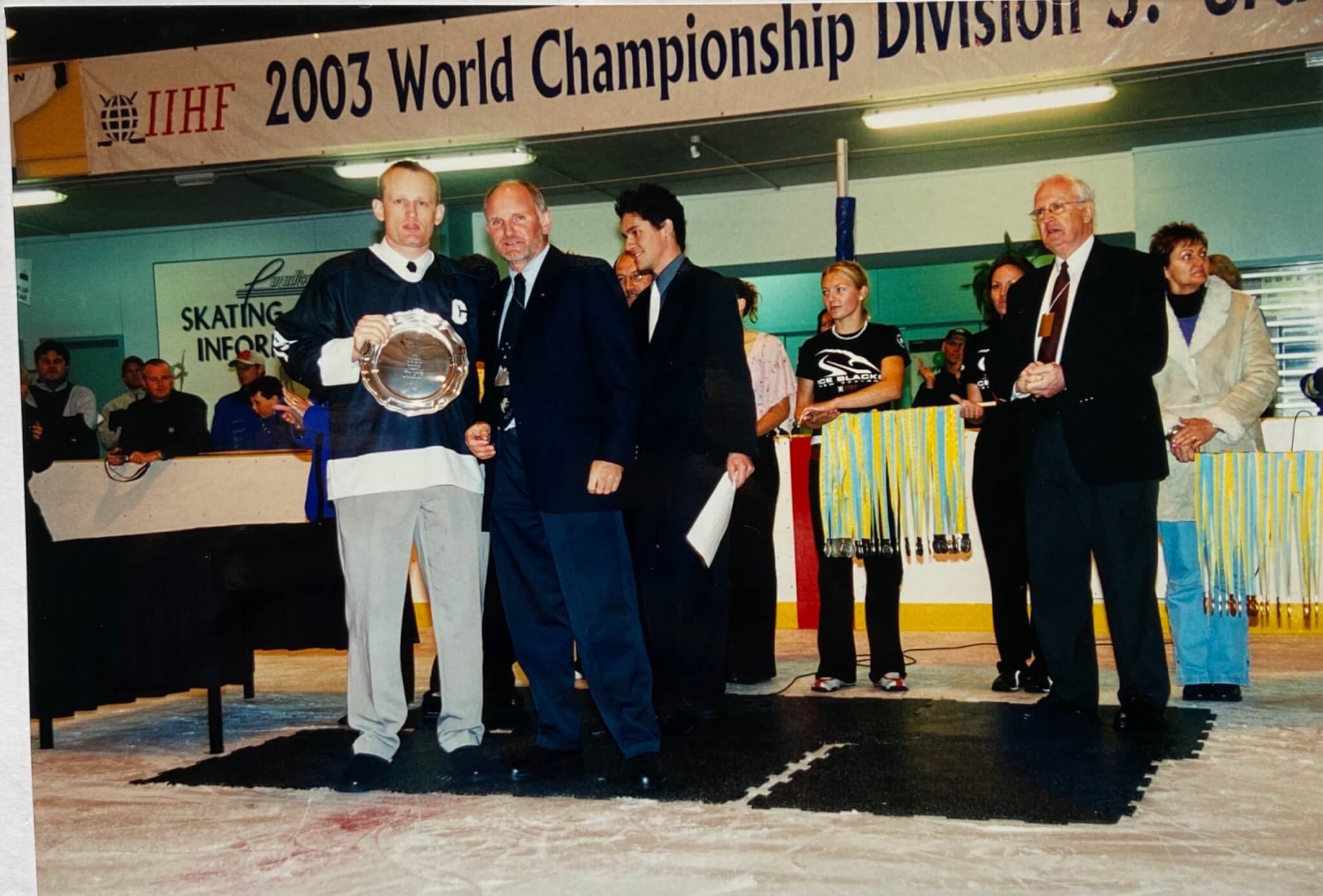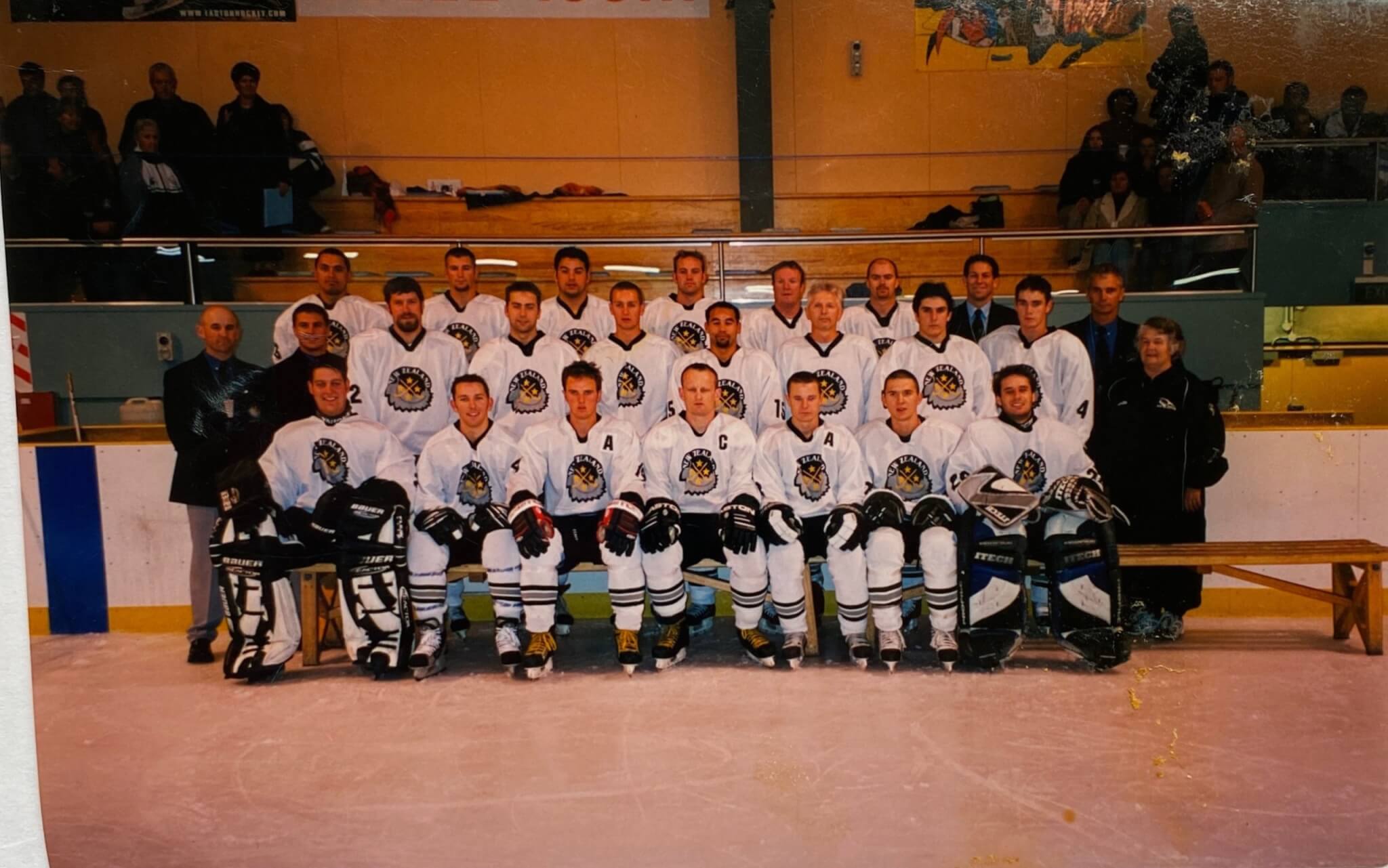Centre Ice: How it all started…
PART 1: How it all started…
Centre Ice has been selling ice hockey equipment to Kiwis for decades, but its history goes back much further. From farmers in the far North in a small town called Ruawai, to owners of New Zealand’s larger ice rinks, the Blong family has become synonymous with ice hockey in this country. For the next three months, Centre Ice is exploring that journey to give you a better sense of who we are, where we’ve come from, what we’re about, and where we’re heading.
If you’re an ice hockey fan, when you hear the name Blong you might immediately think of Darren – owner of Centre Ice, but more poignantly, one of New Zealand’s most decorated ice and inline hockey players.
He spent years travelling around the globe playing and coaching hockey, and now runs New Zealand’s leading ice and inline hockey pro shop.
However, it’s been a family affair from the beginning, with siblings Rosie and Chris owning the Paradice Rinks in Avondale and Botany – an association that spans nearly 40 years.
And it all started on a farm in the Waikato.
Photo: Darren Blong & Graeme Glass 2003 IIHF Division 3 Champs Trophy
(NOT) LOVE AT FIRST SIGHT
Ross Blong was a successful cow cocky in the early 70s, running milking farm north of Auckland.
His dream was always to sell up and buy a rolling lifestyle block somewhere in the Waikato where he could enjoy his days and raise a family.
However, plans changed when an ice rink came up for sell in Glenn Innes in 1974.
Ross, being the entrepreneur that he was, jumped at the opportunity and bought the converted bowling alley to start a new business.
An eight-year-old Darren had never heard of an ice rink in his life.
“I remember someone telling us we had just bought an ice rink,” he said.
“I had no idea what it was, but we got taken up and pushed around in a chair on the ice and that was my first introduction to skating.”
The rink was half the size of the current Avondale rink and had four giant concrete pillars on the edges – remains of the old bowling alley.
“For me, it was definitely not love at first sight,” Darren said.
“I was eight years old and a farm kid, so I was into motorbikes, tractors, hunting, all of that stuff.
“On the weekends, we used to come up and I really didn’t want to go. So, when we got the news we were temporarily moving to Auckland and living in a flat at the back of the ice rink, it was a travesty.”
The family had made a decision to move temporarily to Auckland for 18 months, to ensure the business could grow successfully.
Unfortunately for Darren and his siblings, living on a Farming block in the Waikato turned into ice rinks, and 18 months turned into forever.
Photo: 2003 IIHF Division 3A Ice Blacks Team
EARLY INTRODUCTIONS TO HOCKEY
“We were basically forced to skate,” Darren said.
“We skated after school, in the evenings, on the weekends. Seven days a week, because what else could we do?”
It’s fair to say hockey wasn’t high up on the priority list for the Blongs.
Both Darren and Chris gave up on it after just a year-and-a-half and decided to pursue other sports.
It wasn’t until Darren was 17 that he started to get back into it – pressured by his mates to give it another crack.
“I guess I was looking for something else at the time, but when I got back into it, I just wanted to get really good and play as much as possible.”
The problem was, Darren only had seven fellow players.
They would play games of four on four as part of the Queen City Association and would regularly play against adults from the Association.
Manuwai had some good early influencers, including Darren’s first coach Richie Hita. They were passionate about hockey and encouraged Darren to start learning the game, rather than just playing for fun.
That was a big part of Darren’s early hockey career and something that aided him as he rose through the ranks, playing around the world and captaining the Ice Blacks.
But it wasn’t an easy road.
Photo: North Shore Black Hawk Rage Premier Inline team, Multi NZ National Champs in the 1990’s
NO GEARS BUT ALL THE IDEAS
The Avondale Rink was built in 1982, but there were no Hockey boards around the rink, so Darren and his mates had to make do with cork pucks to keep things safe.
Once Ross put up some chicken wire fencing, they were allowed to play with proper pucks and hockey began to get some legs.
“We were skating every day as teenagers,” Darren said.
“But there was only hockey once a week. We couldn’t just go and play with a puck every day, so it was once or twice a week if we were lucky.”
One of the biggest problems they faced was the lack of equipment. No one was really bringing in hockey gear to help a small community all the way down in New Zealand.
They didn’t have any sticks, so Ross fashioned something himself in true Kiwi style.
“Dad had these shafts that he spray-painted, then he just attached one of those street-hockey, plastic ends to the bottom of it. We thought that was awesome!”
Back in those early years, there was a waiting list that you had to go on if you wanted gear. When someone left the game or decided to give it all up, the first person on the list would be in line to get all the hockey gear.
And if you had a full-length stick, you were basically the king of the ice.
Realising a tiny gap in the market, Ross started bringing in bits and pieces of equipment himself.
“He wasn’t particularly interested in it, he was just sort of helping us out,” Darren said.
And it was literally bits and pieces, supplying the small ice hockey market that had accumulated in New Zealand.
ICE AND INLINE 2000 LTD
Realising there might be more room for growth, Ross set up Ice and Inline 2000 Ltd to start bringing in more gear.
At that time, Darren had just been in Canada and noticed that all the kids on the street in spring were flying around on inline skates.
When he came back to New Zealand, he told Ross and Chris that they needed to start selling inline skates.
Unconvinced, Ross and Chris blew it off – until they went to a conference in Chicago.
“I remember them coming back from Chicago and coming around for a BBQ,” Darren said.
“We’re having a beer and Chris just goes, ‘I’ve found a supplier for inline skates, and I’ve ordered 1000 pairs.”
The team struggled to sell the skates as quickly as they would have liked, and it became apparent that maybe Darren (manager of the rinks at the time) and Chris (running the importing business) were better suited with a switch of roles.
Darren found it just as tough though, with no real knowledge of business and forced to sell all of their gear out of what it is now the grandstands at the Avondale rink.
But the real boom came in the early 90s, when the Auckland Ice Hockey Association formed.
Some foreigners and older statesman who knew how to grow the game took a hold of the sport and suddenly numbers went from the 30s and 40s, to the hundreds.
It wasn’t long before the Manuwai Association joined the Auckland Association and all of a sudden, proper leagues were starting up in Auckland.
Couple that with an increase in hockey lovers moving to New Zealand from Europe and North America, as well as heightened interest in the NHL, you can see how ice hockey started to garner a cult following.
Photo: Blockhouse Bay Kings Auckland Premier Champs multiple club champs late 1980” – 90s
CENTRE ICE
With the increase in playing numbers, came the increase in demand for equipment.
Right at that time, Darren picked up Easton as a major supplier.
Already having a strong hockey presence, Easton branched into softball and baseball, where they approached Darren asking if he too would like to expand his business.
Softball and baseball have long had a rich history in New Zealand, and Darren remembers playing it as a kid. He jumped at the opportunity and suddenly Ice and Inline 2000 Ltd was selling softball gloves and bats.
The name didn’t exactly appeal to the ball community, so the decision was made to split the business in two, with Centre Ice being the ice hockey side, and The Dugout being the baseball side.
And that’s how Centre Ice became to be Centre Ice.
Darren was able to move to a permanent location at Lansford Crescent, where the shop is now, and built a relationship with the folks at Bauer Hockey, now importing equipment on a weekly basis to service everyone throughout the country.
WHERE WE ARE TODAY
Today, Darren still runs Centre Ice and The Dugout, while Chris and Rosie still own the ice rinks.
It’s been over 20 years since Darren first took over and the business has never looked back.
Centre Ice has grown its reputation, stocking the best brands in hockey, providing local experience and customer service, all while staying in touch with a very competitive online market.
They employ 8 staff and support many of the ice hockey, softball, and baseball teams around the country with gear and equipment.
But it goes far beyond just making a profit.
What the Blong story shows is just how instrumental they’ve been in helping ice hockey take off in this country.
Darren is still just as passionate about it now and wants to see the game continually grow and the opportunities for youngsters to broaden.
To read more about how Darren and Centre Ice are achieving that, stay tuned for Part 2!
Written by Sam Hewat






